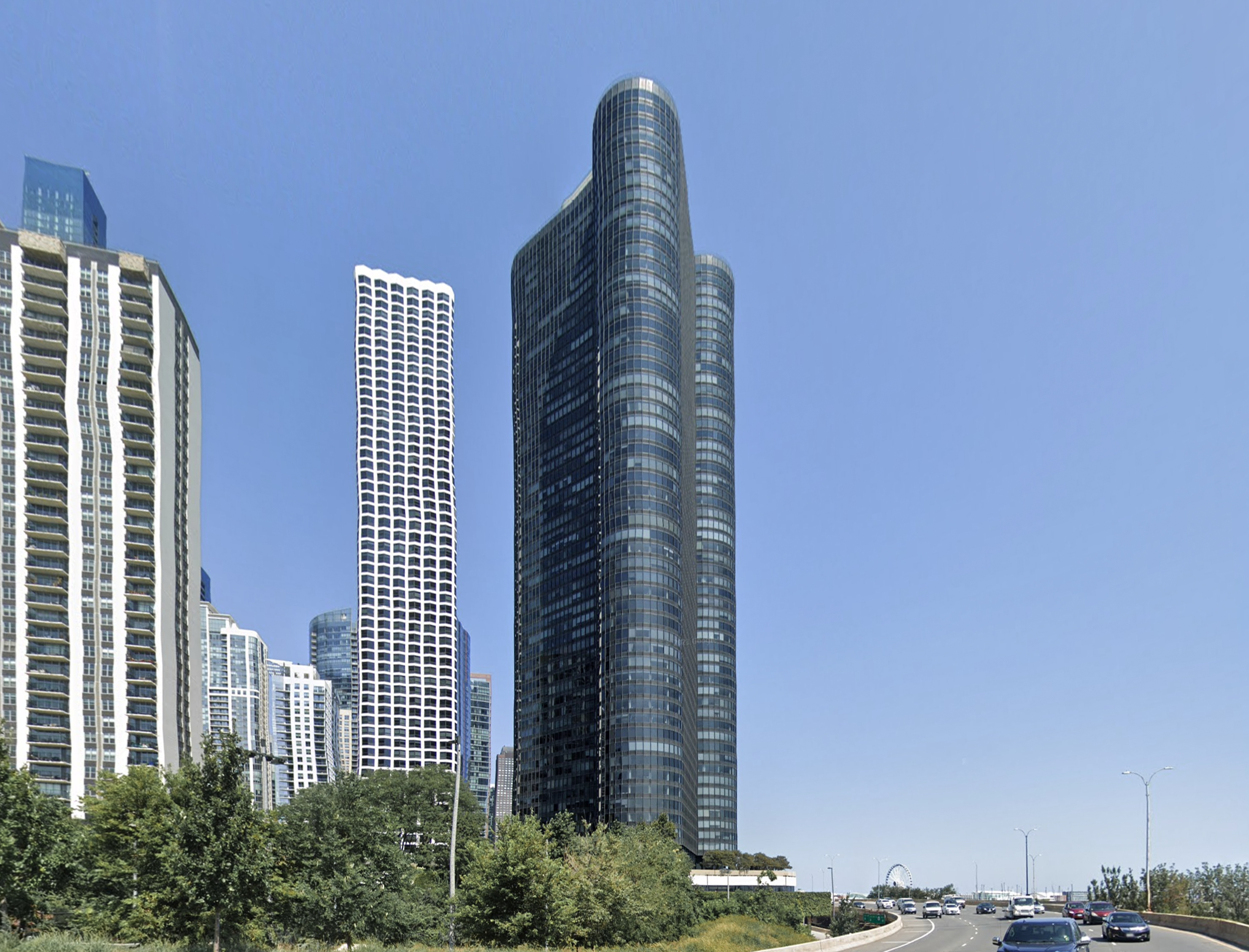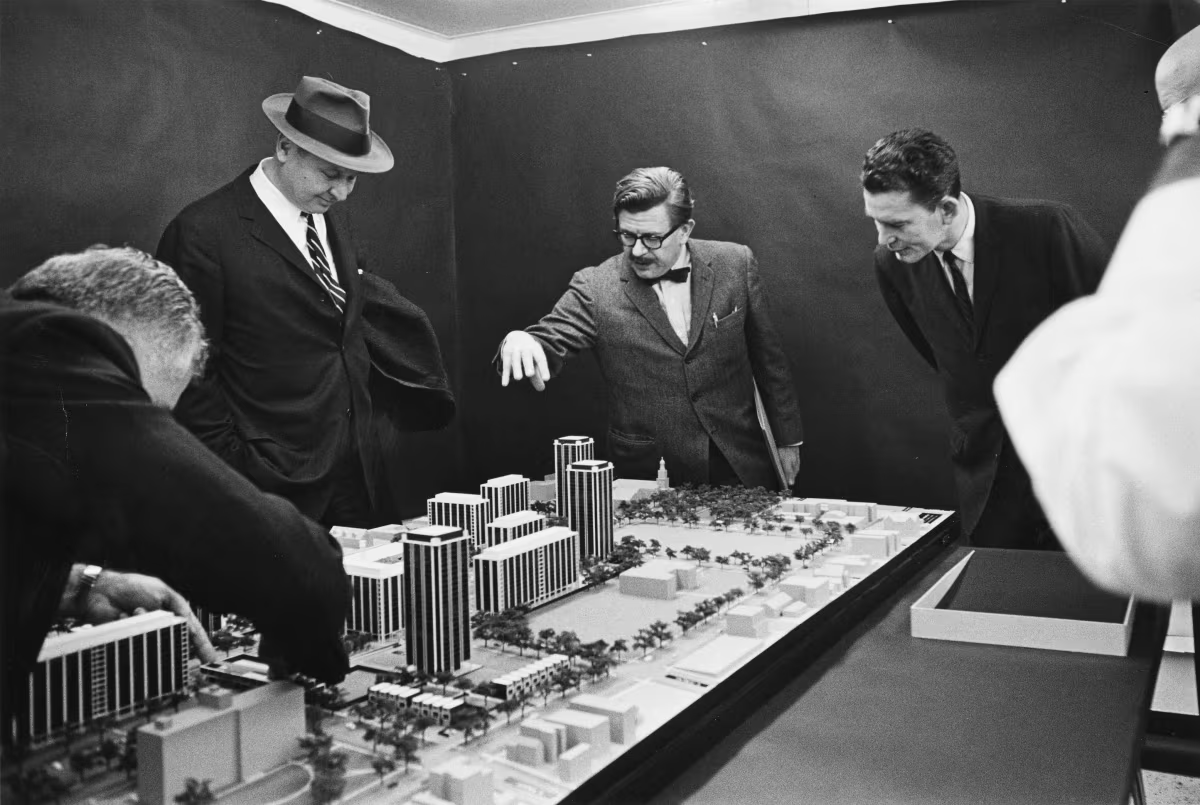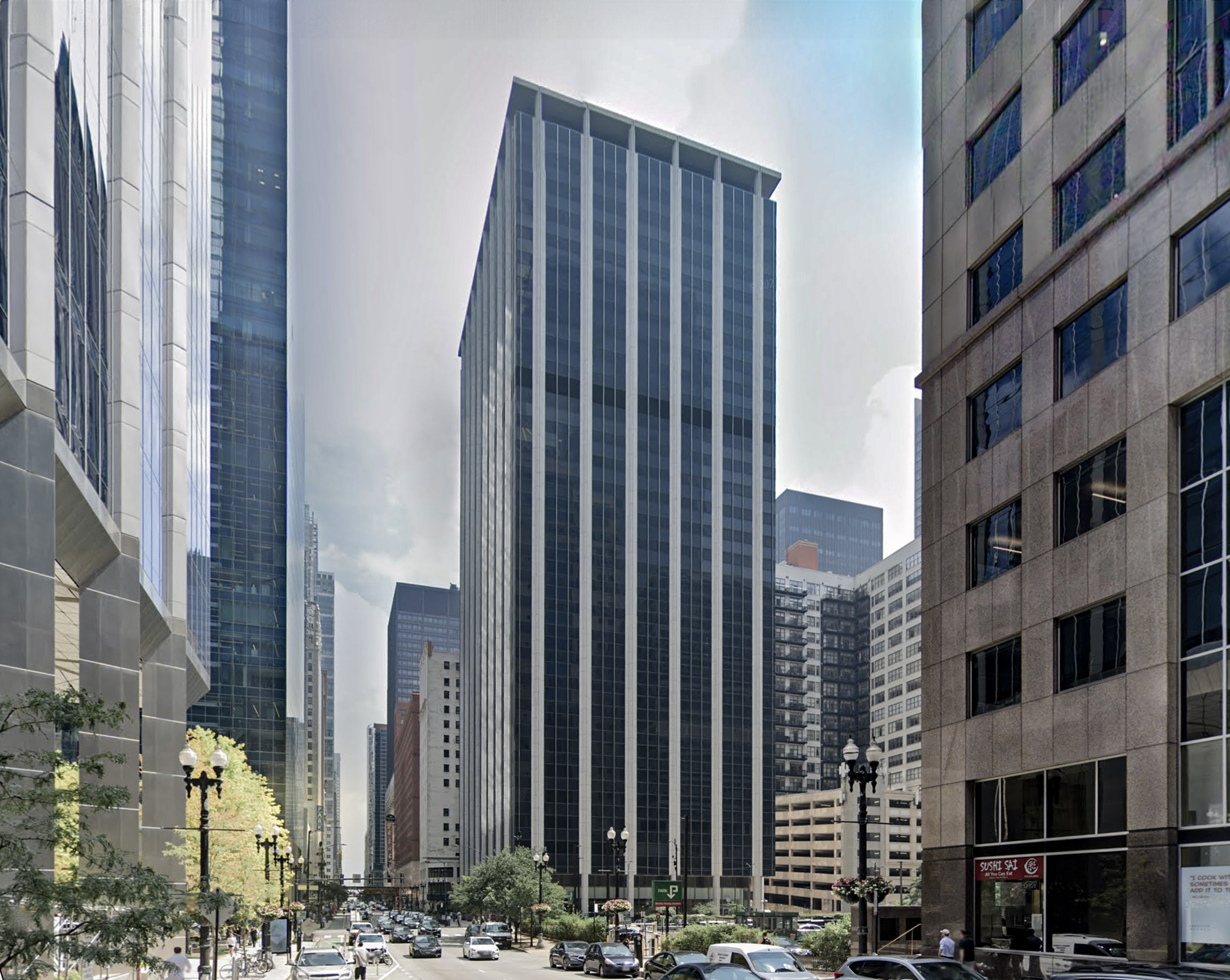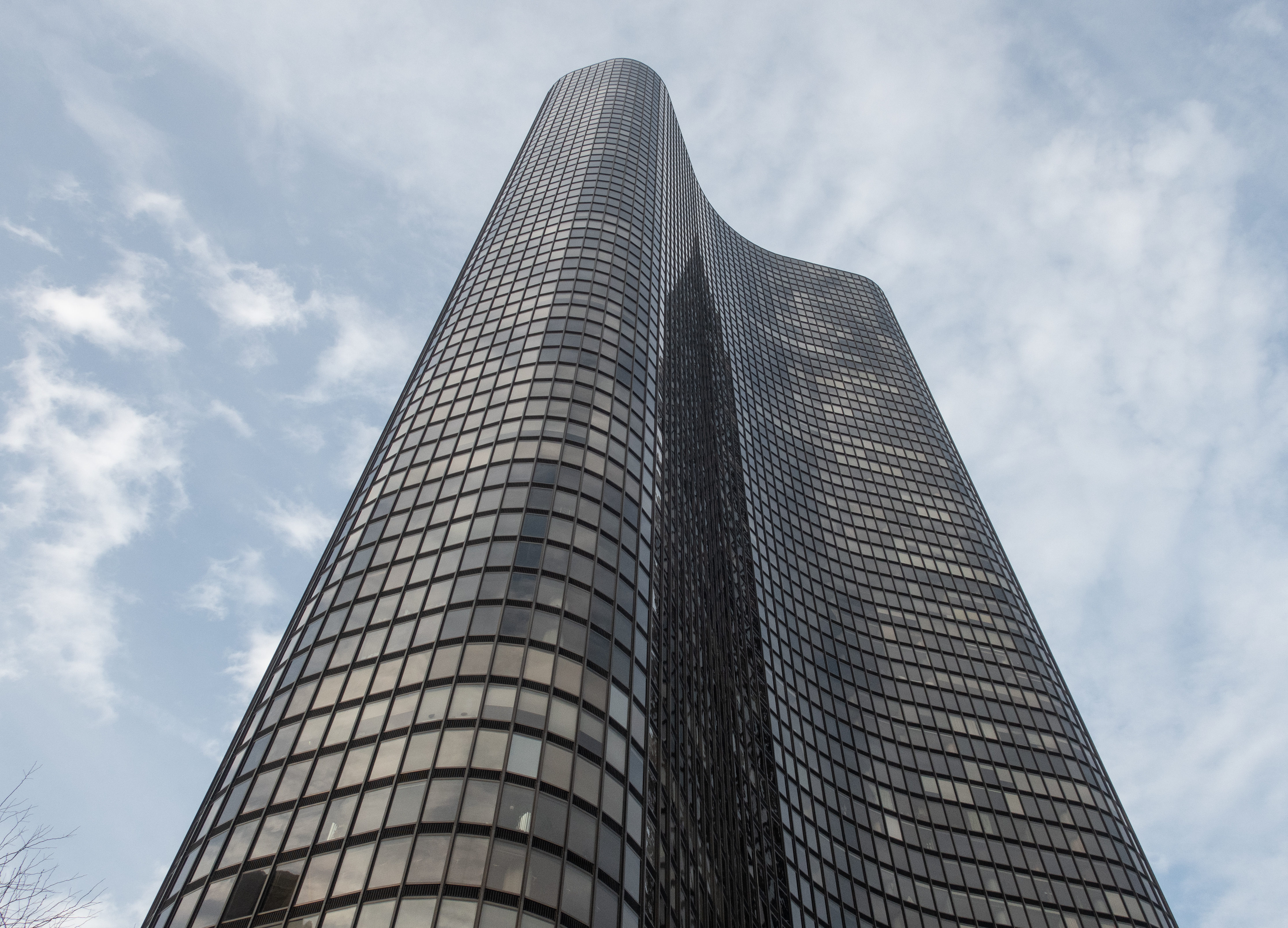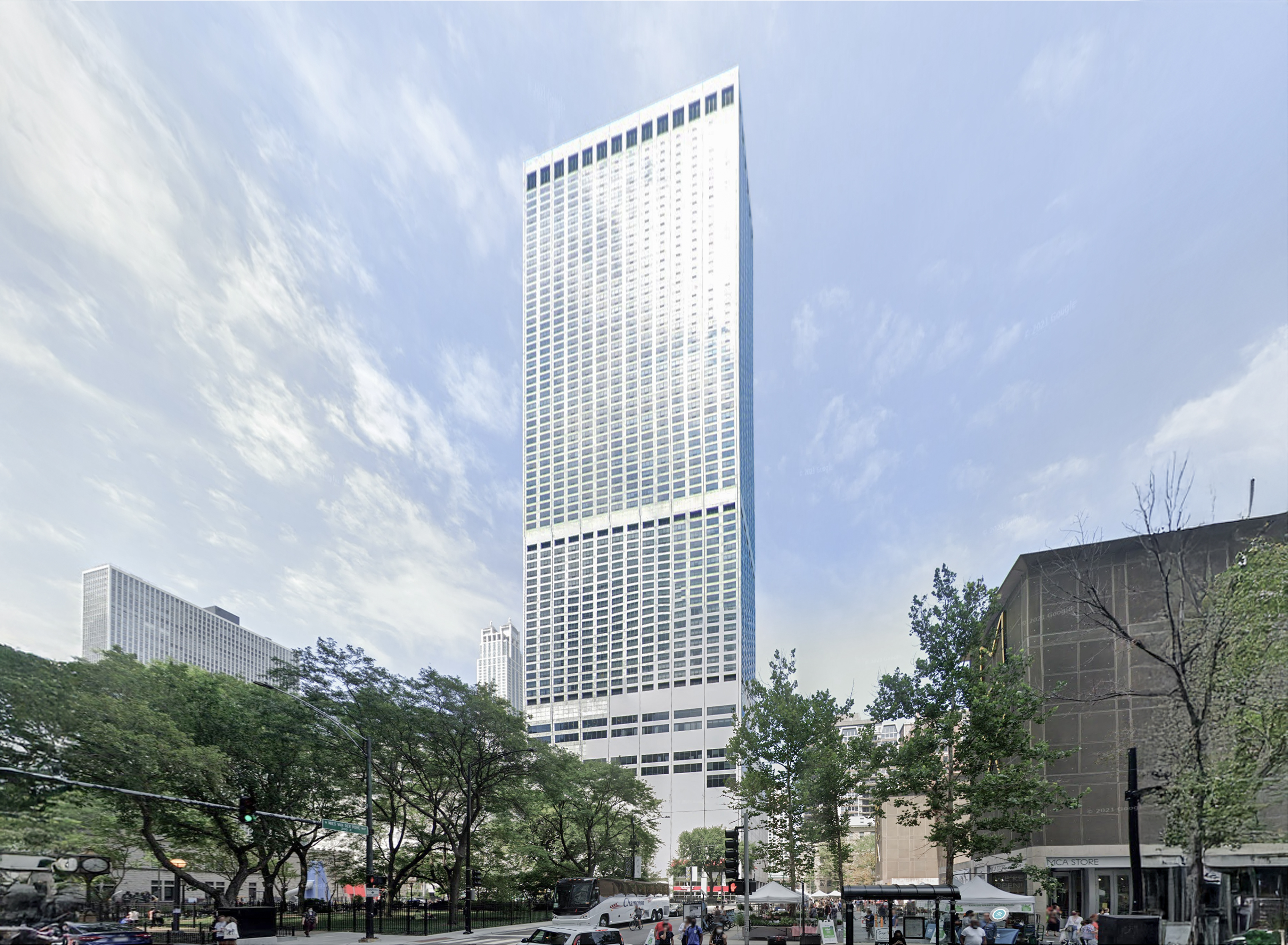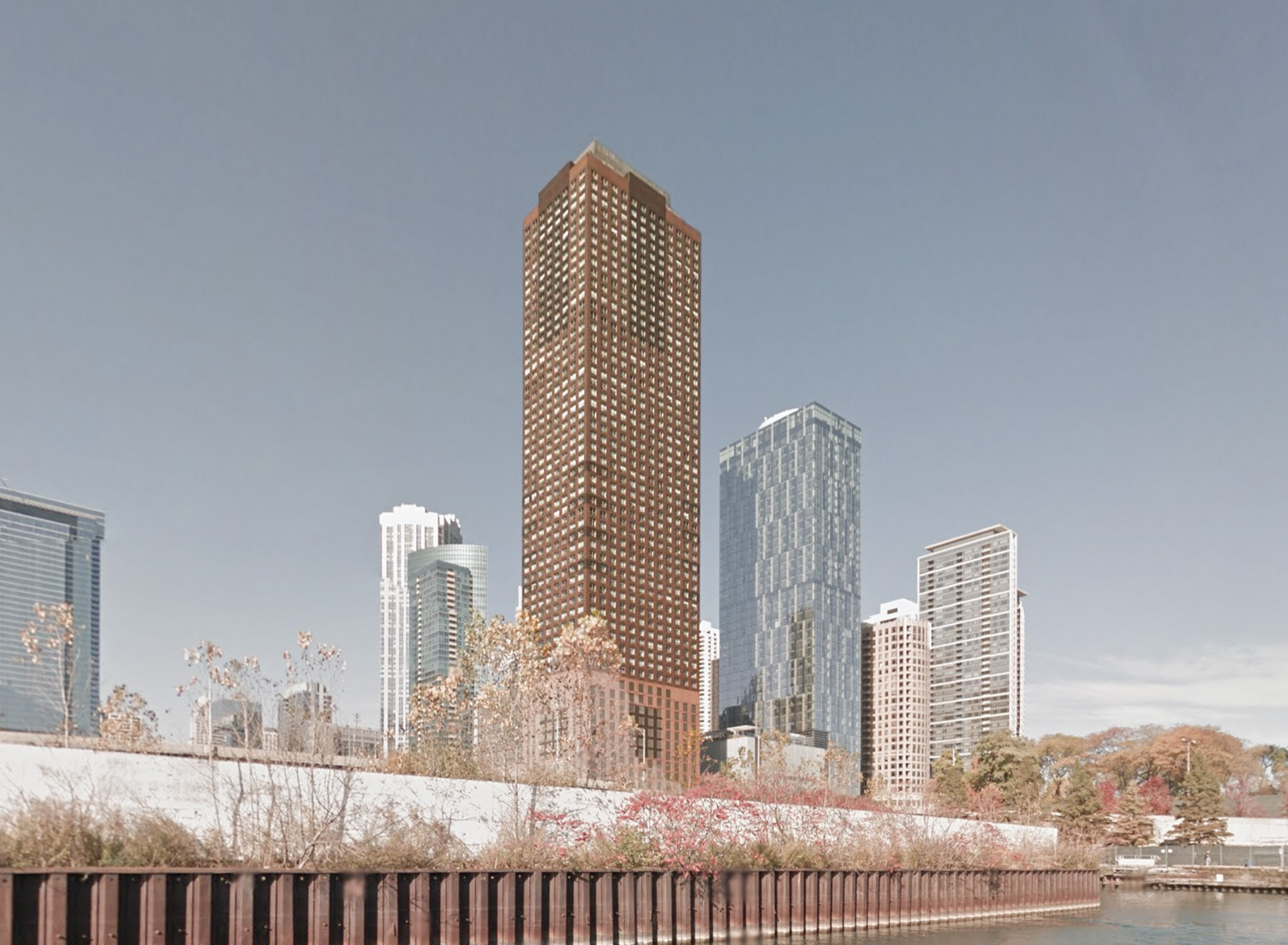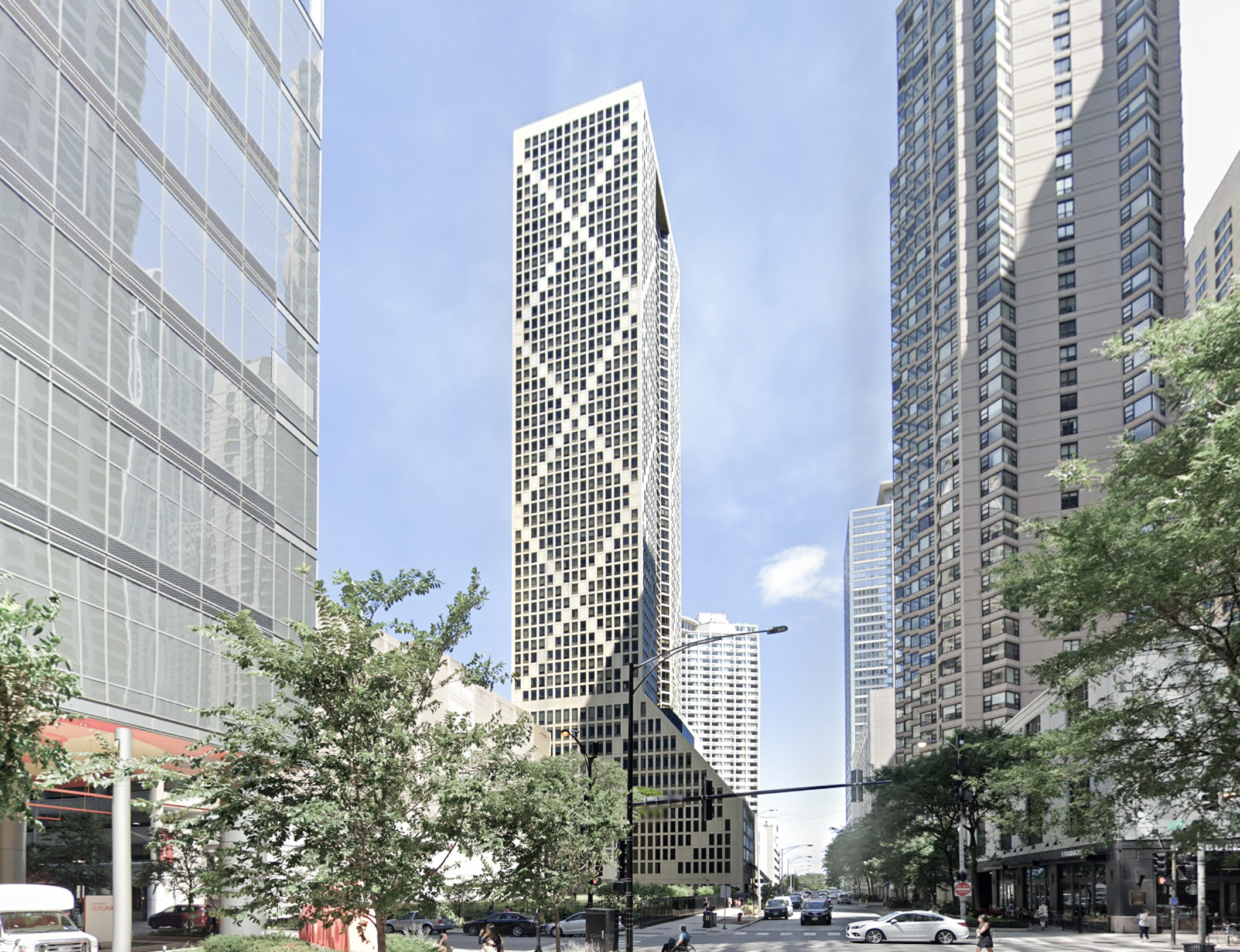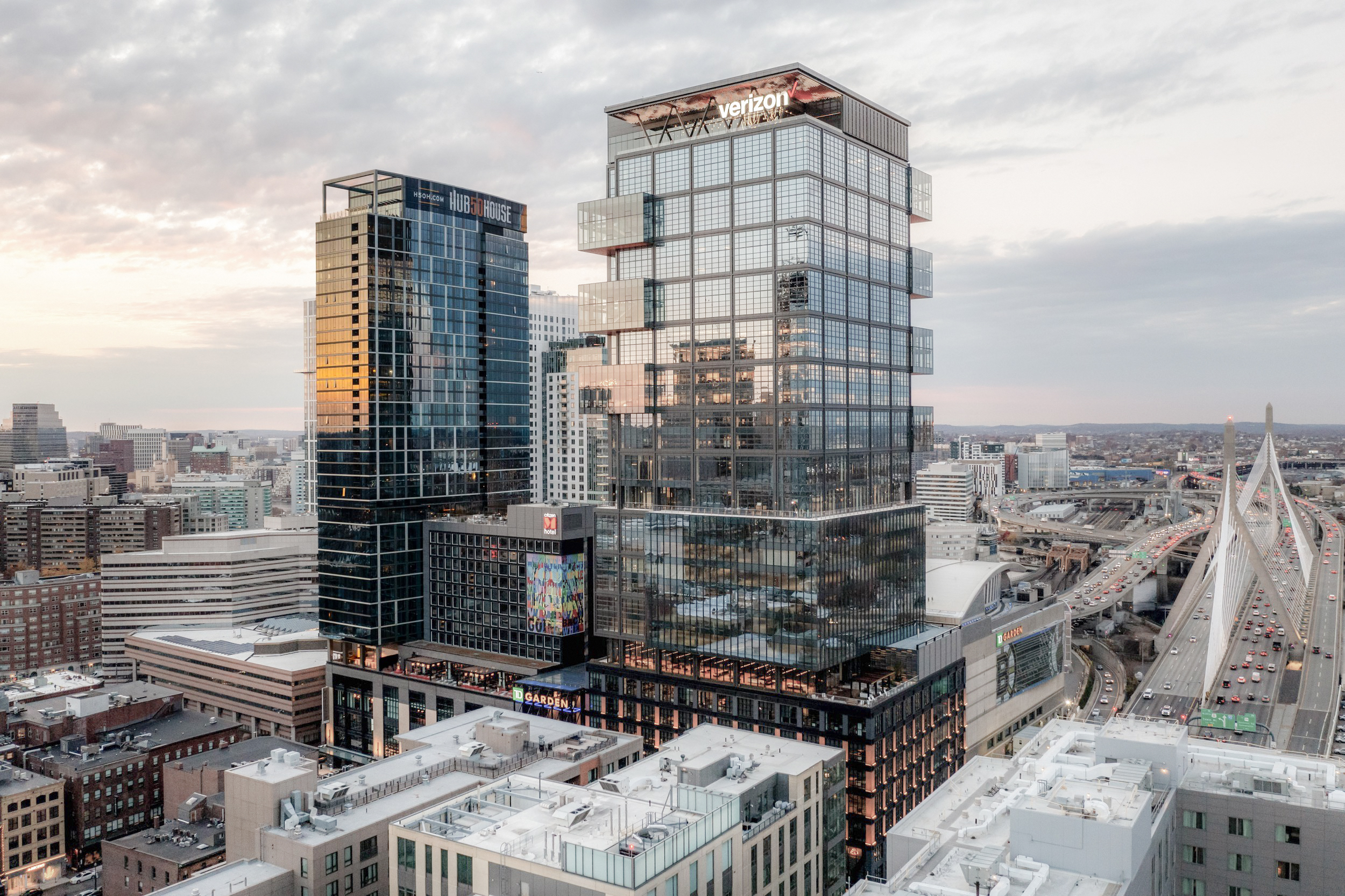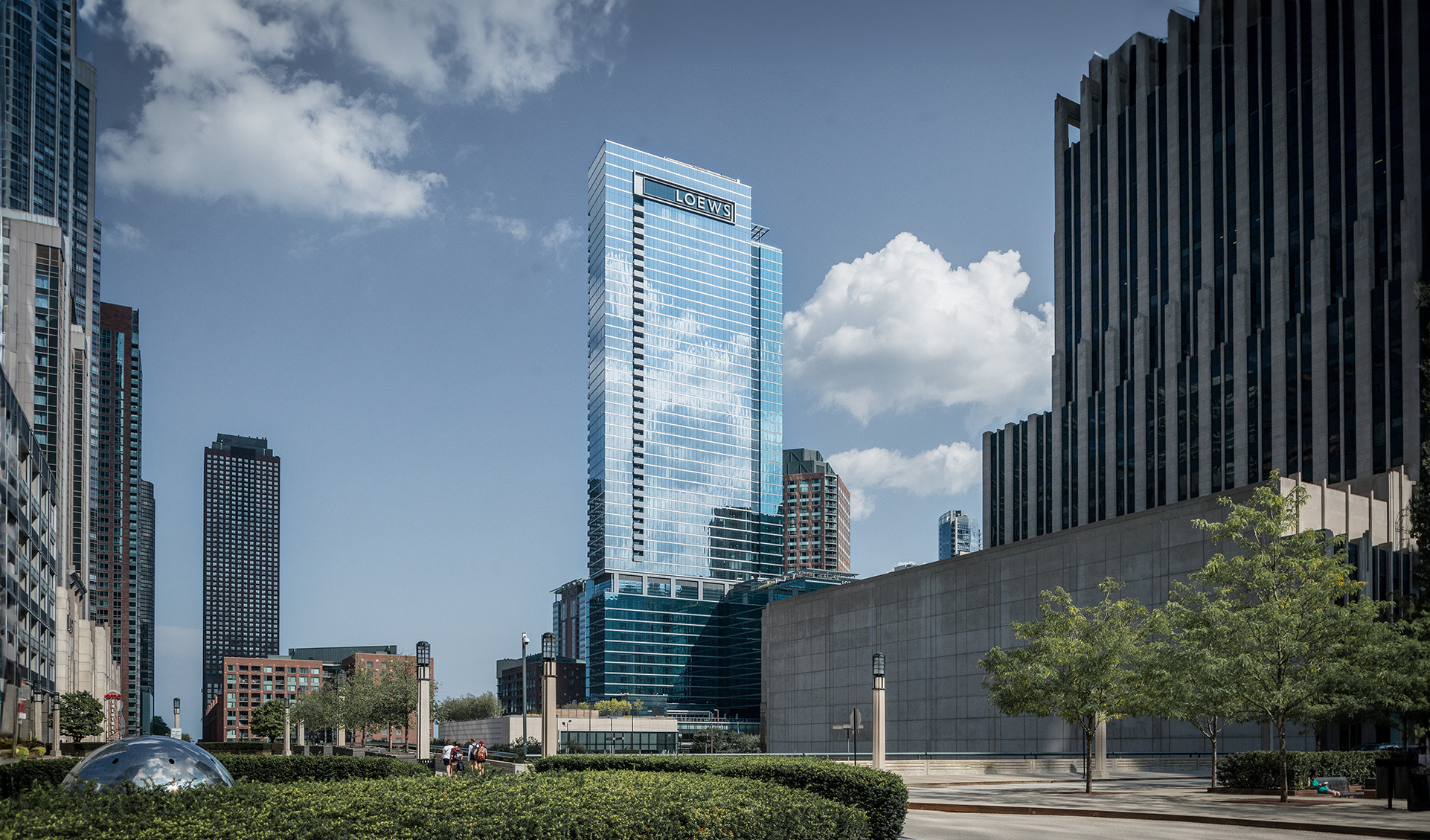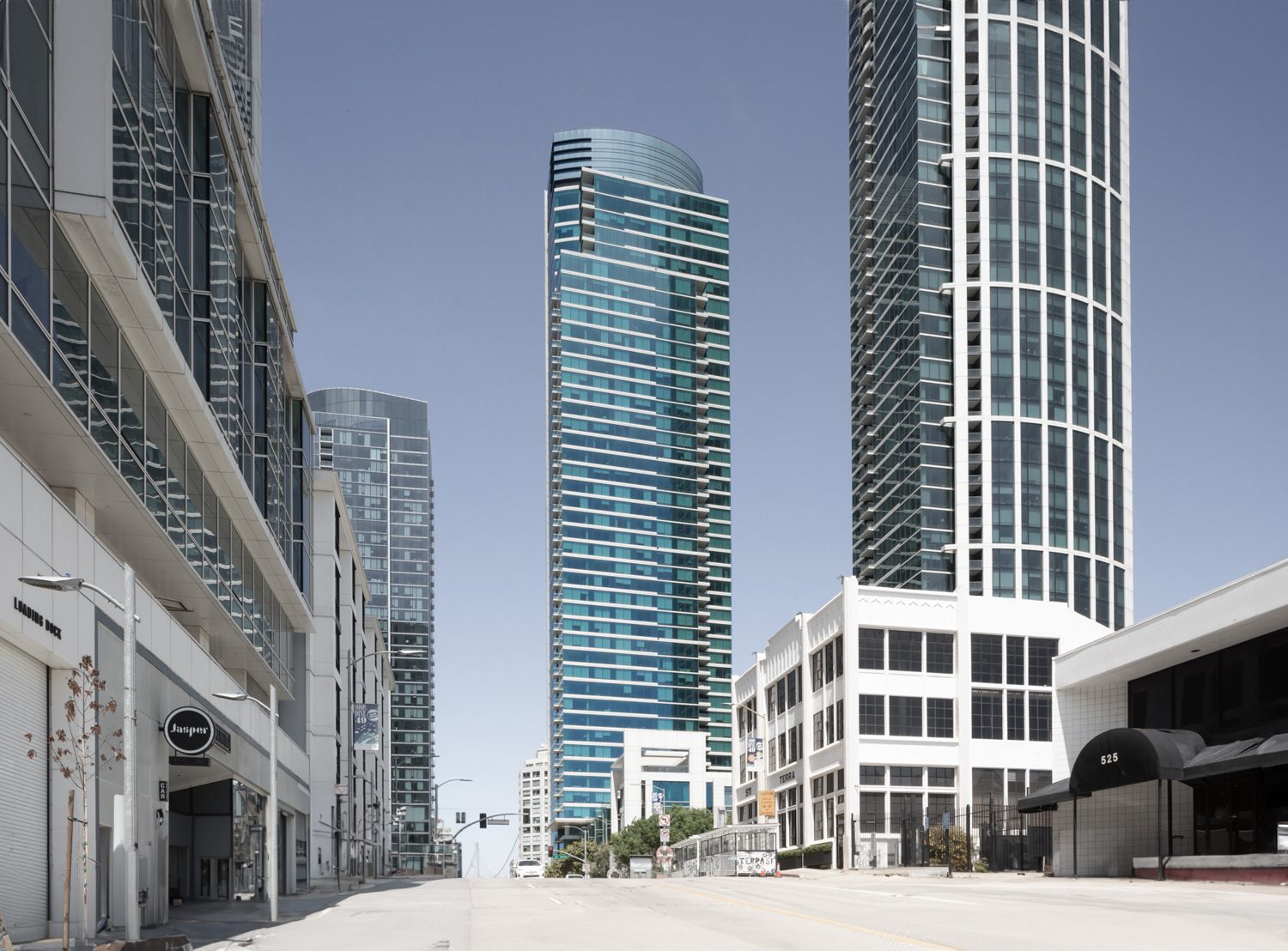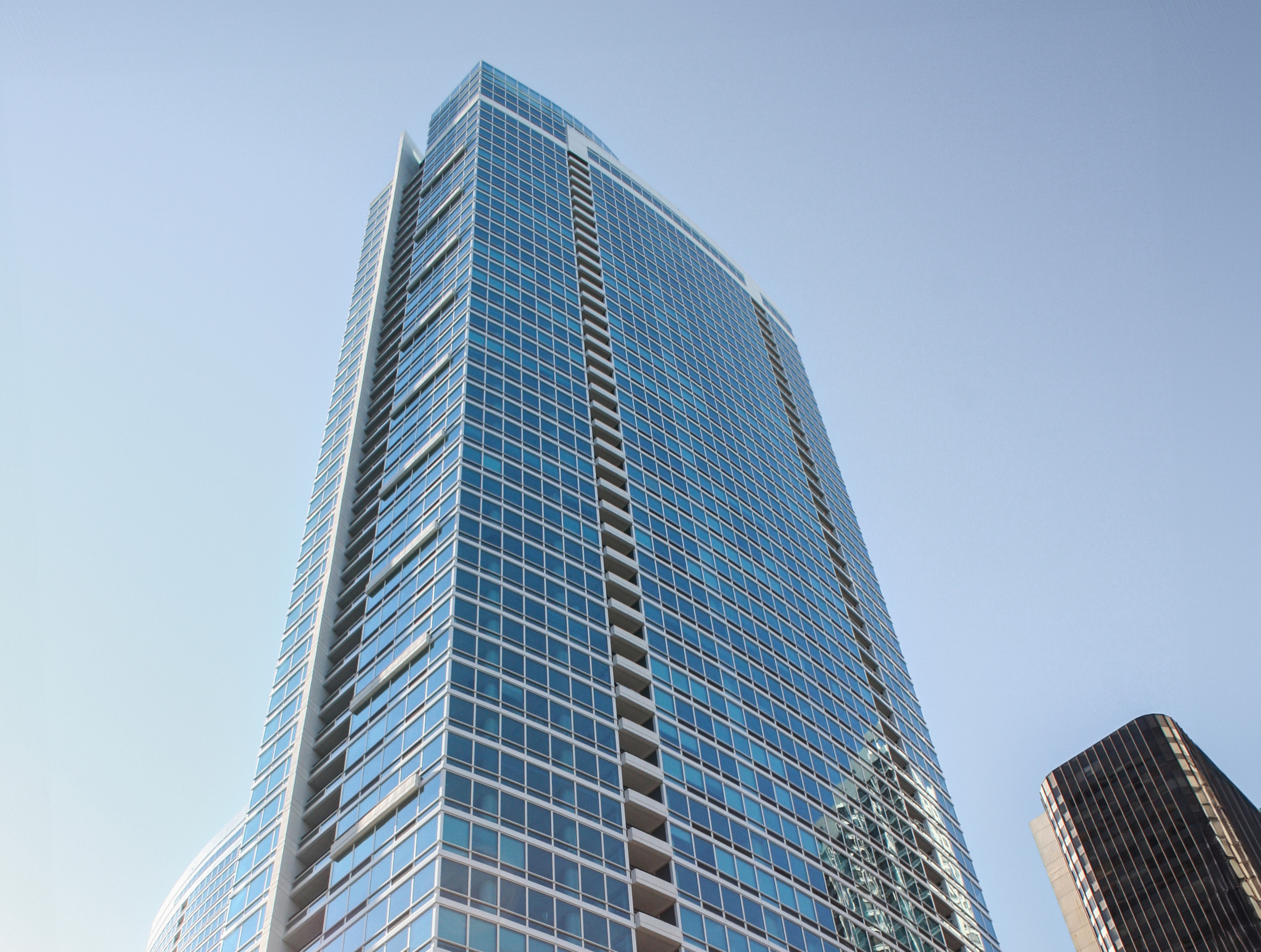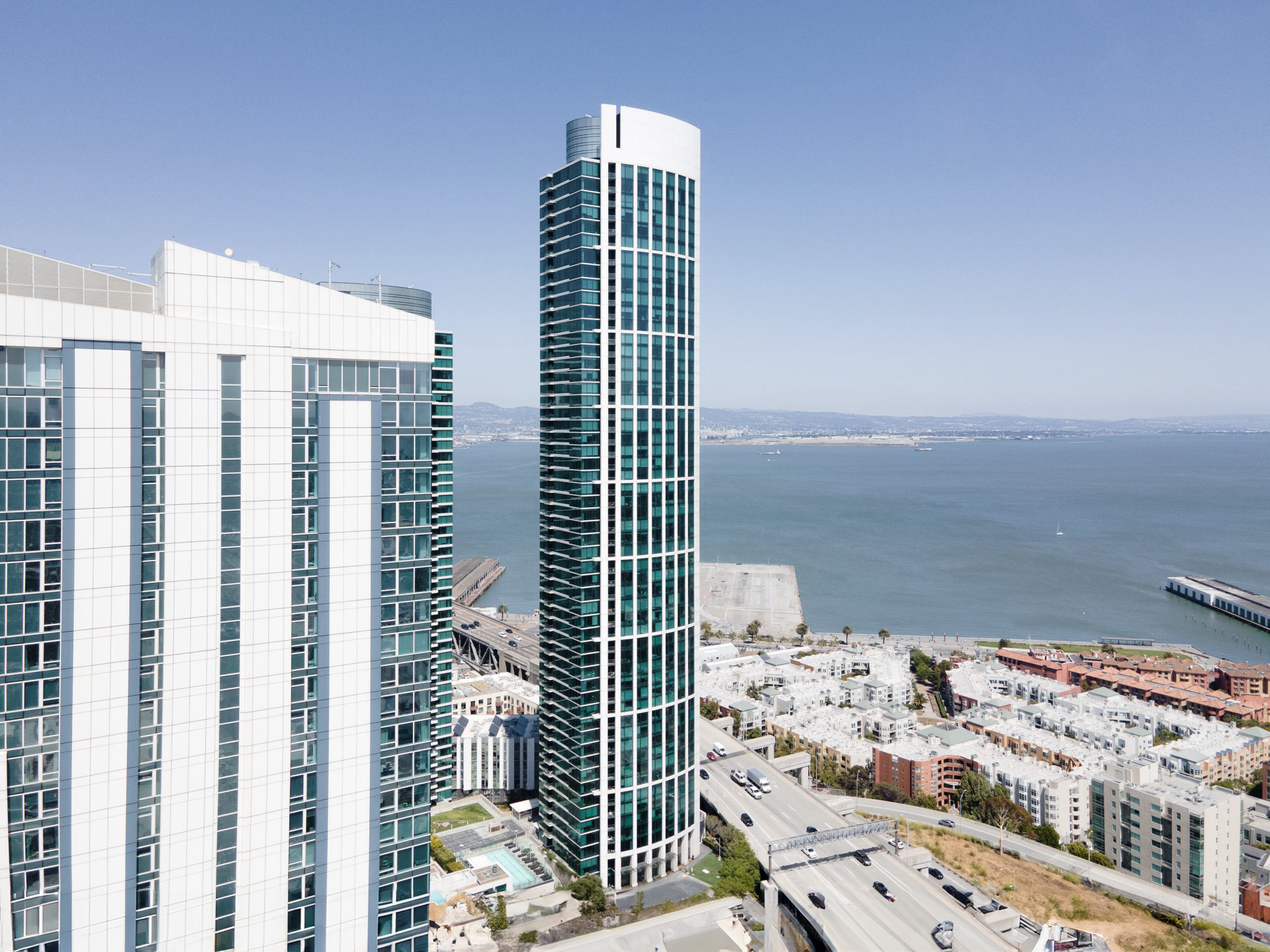The 155 Harbor Condominium is a Modern Style skyscraper designed by Solomon Cordwell Buenz, and built between 1972 and 1975 in Chicago, IL.
155 Harbor Condominium is not the only name you might know this building by though. The building is, or has also been known as Harbor Point.
Its precise street address is 155 North Harbor Drive, Chicago, IL. You can also find it on the map here.
Together with the Lake Point Tower, which was completed in 1968 just a few blocks away, the Harbor Condominium is another example of the possibilities of curved curtain walls. This goes back to some of the exploratory exercises that Mies van der Rohe, a big influence in the adoption of this type of facade, had been playing with back in 1922 in Berlin.
